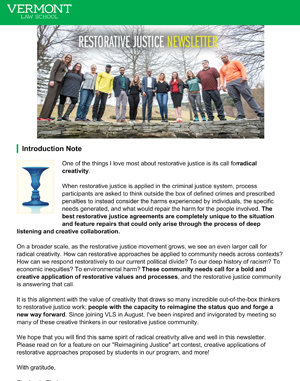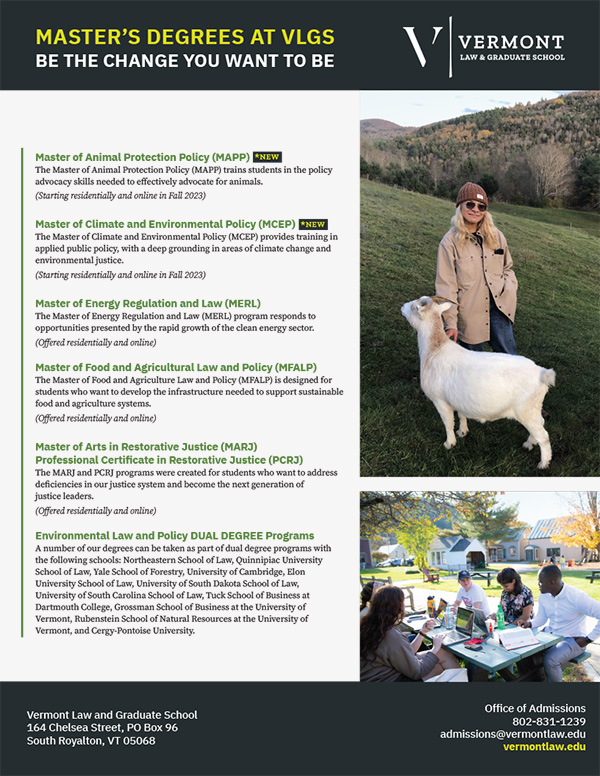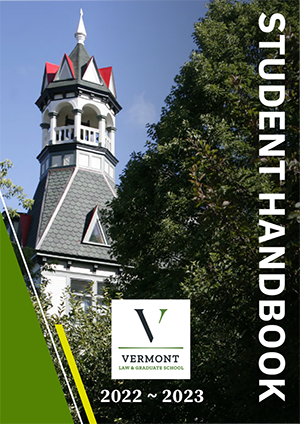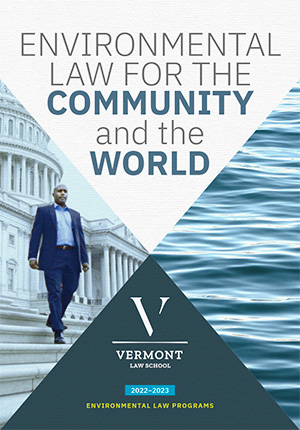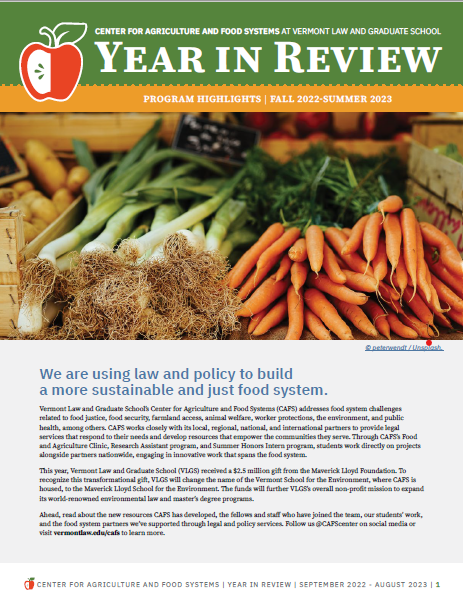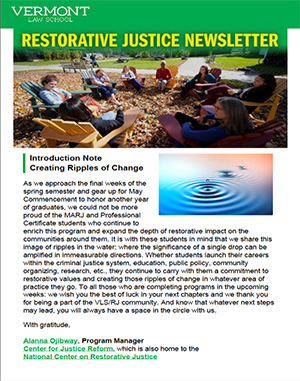The United States is undergoing a monumental energy transformation in which offshore wind will play a major role by helping to decarbonize our energy systems and mitigate the impact of climate change. It provides an opportunity to change what we ask of our energy systems. If implemented properly, offshore wind can drive the clean energy transition and provide considerable social, cultural, and environmental benefits.
Capturing these benefits is the focus of the newly published report by Vermont Law and Graduate School (VLGS)’s Institute for Energy and the Environment (IEE). The report, commissioned by the global conservation organization, The Nature Conservancy, examines how states can use non-price criteria in offshore wind solicitations to produce net environmental gains by guiding and shaping offshore wind development to build biodiversity and enhance ecological function in marine and aquatic environments. Non-price criteria are all criteria used when evaluating bids and solicitations other than price. These factors, which include biodiversity protection, environmental impact mitigation, workforce development, community advantages, and energy system integration, are key to maximizing the potential for environmental, economic, social, and cultural benefits with the expansion of offshore wind.
Because this energy resource is procured in the United States through state solicitation processes and evaluation, it is critical to review the structure of the solicitation process and what benefits the non-price criteria provide. “One of the important purposes of the report is to identify where changes are needed in state solicitation processes and how those changes can be made,” said Mark James, VLGS assistant professor and senior research fellow at the IEE.
The IEE report provides an in-depth analysis of the process and policy objectives for non-price criteria that various states have already put in place for offshore wind energy solicitations. The report also identifies and evaluates the authority granted to key decision-making agencies and reviews how states are currently using non-price criteria and how they might use it in the future.
Environmental safeguards are commonly centered around compensatory mitigation measures such as avoidance, minimization, and mitigation. These measures often fail to incentivize the adoption of net gains or net positive impacts from production and energy operations, partly because of the perception that projects inevitably have negative environmental footprints. The report found that state solicitation processes are using non-price criteria to mitigate potential harms, not to capture potential benefits. As James stated, “A purposeful outcome requires a purposeful process.” The IEE report is a first step in identifying where change is needed and how states can build institutions and processes that restore and enhance our marine and aquatic ecosystems while decarbonizing our energy system.
In contrast, many European countries are utilizing non-price criteria to protect and boost the ecology and biodiversity of marine and aquatic ecosystems. Importantly, European countries are developing the structures and processes to incentivize net gain investments. “Europe has independent panels to evaluate qualitative non-price criteria while in the United States, environmental non-price criteria are often grouped and scored with other non-environmental policy objectives, and project developers are not given specific point allocations for how their proposals would be scored,” James said. These small differences matter when maximizing the potential benefits of offshore wind such as offshore wind auctions and looking at the crucial considerations for stakeholders involved in offshore wind projects.
Fortunately, states are implementing systems and procedures to facilitate the inclusion of net-positive non-price criteria. There is a growing trend toward more targeted efforts for biodiversity and ecosystems in states with multiple rounds of solicitation. “As time goes on, there have been improvements in the specifics of non-price criteria for solicitations,” said Ervin Yahr III, JD/MELP'24, who co-authored the report with Professor James and fellow VLGS students Kira Jannusch AJD'24, Kelsey Koenig JD'23, Jack McGowan JD'23, and Jon Small, MERL'22, AJD'24.
Developers are increasingly required to provide detailed plans outlining specific actions to be taken to reduce the impact on biodiversity and other related ecosystems, along with increased funding for data collection and monitoring practices. Some states require even greater transparency. These measures represent an important step towards introducing net-positive non-price criteria for environmental net gain.





